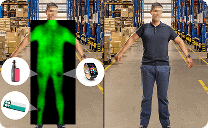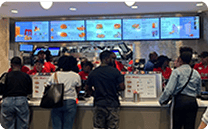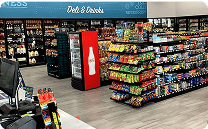In This article
Operational efficiency measures how effectively an organization uses labor, technology, time, and capital resources to achieve desired outcomes. A business that operates efficiently minimizes waste, reduces unnecessary costs, and performs at a high level without sacrificing service quality or compliance.
It directly impacts profit margins, customer satisfaction, and scalability in retail, hospitality, food service, and logistics industries. High-efficiency operations are not just lean—they are structured, measurable, and continuously improving.
Efficiency is achieved not by simply cutting costs, but by streamlining workflows, reducing redundancies, eliminating delays, and using data to make smarter decisions.
Key Components of Operational Efficiency
Several factors contribute to improved operational efficiency across locations or departments:
Process Optimization: Mapping out workflows to identify unnecessary steps, bottlenecks, or overlapping responsibilities, then refining those processes for smoother execution.
Staff Productivity: Ensuring employees are trained, scheduled, and supported to complete their responsibilities effectively and without downtime.
Technology Integration: Using tools such as surveillance analytics, point-of-sale systems, task management platforms, and automated alerts to reduce manual errors and improve response time.
Inventory and Asset Management: Tracking supplies, equipment, and product movement to avoid waste, reduce shrinkage, and prevent over- or under-stocking.
Time Management: Monitoring and adjusting how time is allocated to various activities, from food prep or customer service to cleaning or cash handling.
When these components are optimized and aligned, businesses can increase throughput, reduce errors, and maintain a higher level of service with fewer inputs.
Operational Efficiency in Action
Operational efficiency isn’t just about what’s happening on paper—it’s about what’s happening in real time. Surveillance systems equipped with analytics can reveal behavioral trends and performance gaps that aren’t visible in reports alone.
For example, video footage can help identify slow service areas, traffic flow issues, or inefficient back-of-house practices. When paired with POS data, this visual evidence helps managers understand what’s driving revenue or slowing it down.
Remote monitoring tools also allow leadership teams to verify store-level procedure execution, observe staff behavior, and help ensure that brand standards are consistently met.
Measuring Operational Efficiency
Operational efficiency can be measured using both financial and non-financial metrics, including:
- Labor cost as a percentage of revenue.
- Average transaction or service time.
- Task completion rates.
- Inventory turnover.
- Energy and utility usage.
- Customer wait times or satisfaction scores.
The key is to track the metrics that matter most to your business and tie them to observable behaviors and workflows.
Benefits of Operational Efficiency
Businesses that focus on operational efficiency see gains across several fronts:
- Reduced operating costs and waste.
- Improved employee productivity and morale.
- Faster response to issues or customer needs.
- More consistent execution across locations.
- Stronger profitability and scalability.
It is not a one-time achievement—it’s an ongoing effort that evolves with customer expectations, market conditions, and internal capabilities.
Operational Efficiency and DTiQ
DTiQ helps businesses improve operational efficiency by turning surveillance footage, transaction data, and behavioral analytics into actionable insights. From identifying process breakdowns to verifying staff performance, DTiQ gives you the tools to refine operations and help ensure your business runs smarter, faster, and more consistently—no matter how many locations you manage. Contact us to learn more.





























